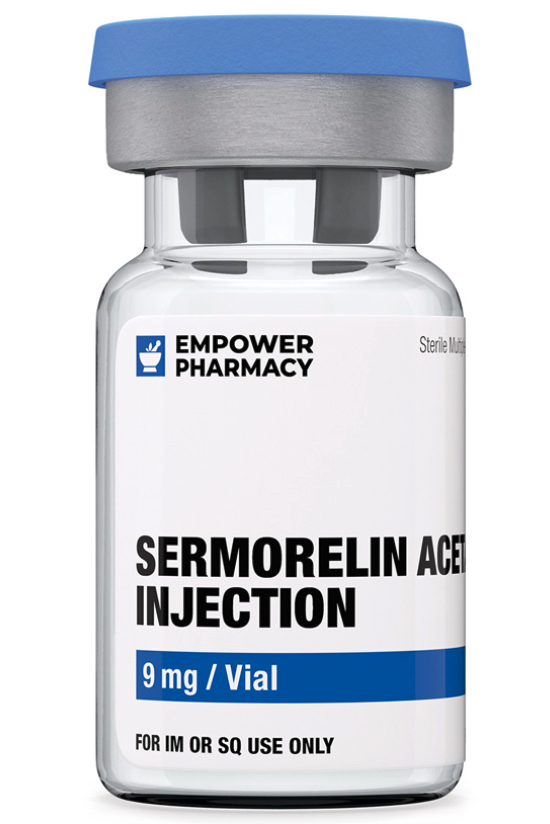
- Medical Weight Management
- Peptide therapy
- Men’s health and HRT
- Hair loss and Anti-aging
- Behavioral Health
- Other minor care issues
We likely can see you for conditions not on this list, just send us a message. If at any point in the visit your provider determines that your condition cannot be successfully treated in this format, you may be referred to a facility or specialist near you.
Tirzepatide
Pricing
Initial visit fee: $75
If this medication is prescribed, the initial fee will be credited towards the total cost.
- Tirzepatide 5 mg/0.5 mL – 1 mL (10 mg total) – $250
- Tirzepatide 5 mg/0.5 mL – 2 mL (20 mg total) – $400
- Tirzepatide 5 mg/0.5 mL – 3 mL (30 mg total) – $600
- Tirzepatide 5 mg/0.5 mL – 5 mL (50 mg total) – $1000
*Prices subject to change
What is tirzepatide?
Tirzepatide is a novel medication developed by Eli Lilly, primarily used for the treatment of type 2 diabetes. It works by mimicking incretin hormones and is unique in combining the actions of GLP-1 and GIP into a single molecule. One of its side effects includes weight loss.
How does tirzepatide work?
It aids in weight loss by:
- Delaying gastric emptying.
- Increasing insulin sensitivity and secretion.
- Decreasing glucagon secretion.

Adverse Effects
Common side effects include nausea, diarrhea, vomiting, decreased appetite, and abdominal pain. These are often most significant at the beginning of therapy. Tirzepatide may also cause hypoglycemia, particularly when used with other glucose-lowering medications.
Dosing
Tirzepatide is generally administered once weekly as a subcutaneous injection. The dose usually begins at a lower level and is gradually increased over time to enhance weight loss potential while mitigating gastrointestinal side effects.
The dose typically starts at 2.5 mg once weekly. If needed, this dosage can be increased gradually to 5 mg, then to 10 mg, and finally to 15 mg per week, based on the patient's response to the medication and tolerance.
It's crucial to note that the dosing regimen can differ based on several factors, including a patient's other health conditions, starting bodyweight, age, and more. It's also important to consider that tirzepatide should be used in combination with diet and exercise to optimize the weight loss potential.
Semaglutide
Pricing
Initial visit fee: $75
If this medication is prescribed, the initial fee will be credited towards the total cost.
- Semaglutide 2.5 mg/mL – 1 mL vial - $200
- Semaglutide 2.5 mg/mL – 2 mL vial - $300
- Semaglutide 2.5 mg/mL – 3 mL vial - $400
- Semaglutide 2.5 mg/mL – 5 mL vial - $600
*Prices subject to change

What is semaglutide?
Semaglutide is a medication that belongs to a class of drugs called glucagon-like peptide-1 receptor agonists (GLP-1 RAs). Originally used for the treatment of type 2 diabetes, semaglutide has also been found to be effective in promoting weight loss in both patient with and without diabetes.
How does semaglutide work?
When used for weight management, semaglutide is given as an injectable medication. It works by mimicking the action of a hormone called GLP-1, which is naturally produced in the body. GLP-1 helps regulate appetite, blood sugar levels, and digestion.
Semaglutide helps with weight loss by reducing appetite and increasing feelings of fullness, which can lead to fewer food cravings and a decrease in calorie intake. Studies have shown that people who use semaglutide along with lifestyle modifications such as diet and exercise can achieve significant weight loss.
Adverse Effects?
Like all medications, semaglutide may cause side effects in some people. The most common adverse effects reported in clinical trials are often gastrointestinal in nature. These include:
- Nausea: This is the most common side effect but often lessens over time as the body adjusts to the medication.
- Diarrhea: Some people may experience loose and more frequent bowel movements.
- Vomiting: Some patients may experience episodes of vomiting.
- Decreased Appetite: Patients may feel less hungry, attributable to the delayed gastric emptying process.
- Abdominal Pain: Some people may feel discomfort or pain in the abdomen.
These side effects occur most often at the beginning of therapy and may lessen over time with continued use of the medication. However, if these side effects are severe, persistent, or worsening, patients should consult their healthcare provider promptly.
Semaglutide can potentially cause hypoglycemia, or low blood sugar, especially when used with other glucose-lowering medications. Signs of hypoglycemia can include sudden sweating, shaking, fast heartbeat, hunger, blurred vision, dizziness, or tingling in hands and feet. This is another reason why any treatment plan with semaglutide should be under close medical supervision.
The list above does not include all possible side effects. Individual responses to medications can differ and some people may experience other side effects. It's essential to discuss any concern with your provider.
Dosing?
Semaglutide is generally administered once weekly as a subcutaneous injection. The dose usually begins at a lower level and is gradually increased over time to enhance weight loss potential while mitigating gastrointestinal side effects.
The dose typically starts at 0.25 mg (10 units) once weekly. If needed, this dosage can be increased gradually up to 2.5 mg (100 units) once weekly, based on the patient's response to the medication and tolerance.
It's crucial to note that the dosing regimen can differ based on several factors, including a patient's other health conditions, starting bodyweight, age, and more. It's also important to consider that semaglutide should be used in combination with diet and exercise to optimize the weight loss potential.
Testosterone Replacement Therapy
Pricing
Initial visit fee: $75
- $130 monthly (medication prescribed as 4 to 5 week supply)
*Prices subject to change

What are the symptoms of low testosterone?
- Sexual Dysfunction: Reduced libido, fewer spontaneous erections, and erectile dysfunction.
- Fatigue: General feelings of tiredness and loss of energy.
- Mood Changes: Sadness, depression, irritability, or difficulty concentrating.
- Physical Changes: Increased body fat, reduced muscle bulk, decreased bone density, gynecomastia, and reduced hair growth.
- Sleep Disturbances: Trouble sleeping or sleep apnea.
- Cognitive Changes: Decrease in motivation or self-confidence.
- Metabolic Impacts: Insulin resistance and metabolic syndrome affecting cardiovascular health.
- Fertility Issues: Decreased sperm count.
Adverse Effects
- Cardiovascular Risks: Increased risk of heart attacks and stroke.
- Mood Fluctuations: Mood swings, aggression, depression.
- Polycythemia: Rise in red blood cell count, increasing blood clot risk.
- Sleep Apnea: May worsen existing sleep apnea.
- Skin Reactions: Pain, swelling, or redness at the injection site.
- Prostate Problems: Stimulates prostate tissue growth and may increase prostate cancer risk.
- Testicular Atrophy: Shrinkage of testicles due to external testosterone supply.
- Impaired Fertility: Lower sperm count.
- Gynecomastia: Enlargement of breast tissues in men.
- Oily Skin and Acne: Can cause or exacerbate acne.
Route of Administration
Intramuscular injection
Sermorelin Acetate Injection
Pricing
Initial visit fee: $75
If this medication is prescribed, the initial fee will be credited towards the total cost of the compounded medication (including shipping).
- Sermorelin acetate injection – 9 mg - $250
- Sermorelin acetate injection – 15mg - $350
*Prices subject to change

What is sermorelin?
Sermorelin is a shortened version of Growth Hormone Releasing Hormone (GHRH), constructed from the first 29 amino acids of the naturally formed neurohormone originated in the hypothalamus. It is highly recognized within the GHRH analogue pharmaceutical category due to its effective role in urging the production and release of growth hormone (GH) from cells in the pituitary gland. This process can enhance levels of GH and subsequently insulin-like growth factor 1 (IGF-1) in both animals and humans.
Sermorelin's operations extend to controlling a variety of hormonal signals, including GHRH, somatostatin, and insulin-like growth factor (IGF), among others that impact GH secretion from the anterior pituitary. Notably, the rhythmic-circadian pattern of GH releases is a result of the counterbalance between GHRH and somatostatin that stimulate and suppress GH secretion, respectively. Hence, sermorelin can adjust the amplitude and frequency of GH pulses.
Alongside amplifying the production and release of GHRH, Sermorelin also positively influences sleep patterns by enhancing slow wave sleep (SWS) and augmenting sleep-related GH secretion while reducing cortisol secretion.
The beneficial effects of Sermorelin are dependent on a functional pituitary and a variety of peripheral tissues. This is due to its reliance on natural receptors that control hormone-secreting glands and tissues, especially the functioning growth hormone releasing hormone receptors (GHRHr) present on somatotrophs in a functioning anterior pituitary.
Sermorelin for anti-aging?
As we age, growth hormone levels begin to decline. Sermorelin is used off-label for its potential anti-aging effects including:
- Improved skin elasticity
- Enhanced Energy
- Reduce body fat
- Increase muscle mass
Contraindications?
- Hypothyroidism: If hypothyroidism is left untreated, it could negatively affect the patient's response to Sermorelin. Therefore, thyroid hormone levels should be assessed before starting and throughout the course of Sermorelin therapy. If necessary, therapy to replace the thyroid hormone should be introduced.
- Intracranial Lesions: Clinical trials did not examine patients with GH deficiency due to intracranial lesions. Accordingly, Sermorelin treatment isn't advised for such patients.
- Obesity, Hyperglycemia, or Hyperlipidemia: Notably, diminished GH reactions have been observed in patients with obesity and hyperglycemia, as well as in those presenting with high levels of plasma fatty acids.
Adverse Effects
Patients may experience brief discomfort, swelling, or redness at the site of the injection. Other adverse effects that have been reported include headaches, difficulty swallowing, dizziness, hyperactivity, or sleepiness.
There have been no reports of widespread allergic reactions. However, one case reported severe redness, swelling, and skin rash at the injection sites in a patient who developed antibodies.
The use of Sermorelin may decrease insulin sensitivity, potentially elevating blood glucose levels to a degree which may be hurtful for individuals with diabetes. It might also lower triiodothyronine (T3) levels due to its propensity to diminish bodily stores of sodium, potassium, and phosphorus.
Dosing?
While Sermorelin is not FDA-approved for anti-aging therapy, in the off-label use scenario, dosages typically range between 100 to 500 micrograms per day (3 mcg/kg/day) is usually administered via nightly subcutaneous injection.
1 in 5 Americans experience a diagnosable mental illness in a given year. A healthy mind is just as important as a healthy body. If you are experiencing depressed mood, difficulty sleeping, issues with attention/concentration, or anxiety, schedule an appointment with one of our licensed medical professionals.
